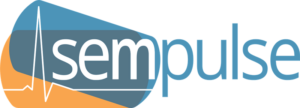Elevator Pitch
Sempulse’s FDA-cleared Halo monitor applies in seconds to the back of the ear and wirelessly monitors 100s of patients’ vital signs, non-invasively, during motion, and in austere environments. That’s pulse oximetry (SpO2), pulse rate, respiratory rate, core body temperature, and skin temperature within 2 seconds of application.This data is then securely transmitted to a medic’s tablet and simultaneously to remote physicians to allow them to add their expertise.
Today, medics have to manually take vital signs with their fingertips and stethoscopes and then subjectively decide who to help first. Our system automatically retrieves patients’ vital signs, objectively prioritizes them by severity, and then allow medics to actually do what they’re trained to do: care for the wounded.
Concept
According to the U.S. Army, during the last 2 major conflicts in Iraq and Afghanistan 51.4% of those soldiers who did not come home died of potentially survivable causes. Outpatient surgeries are on pace to double within 3 years. Mass casualty events leave first responders unequipped to locate and treat patients in priority order – sometimes people are lost because they weren’t seen in front of others who could have managed to wait. Nursing home populations will continue to increase with the influx of Baby Boomers. Multiple vehicle traffic accidents require patients to wait for multiple ambulances to accommodate the wounded. All of these pointed us at Sempulse to create the Halo, a small, lightweight vital signs sensor that affixes to the neck and the back of ear, leaving full mobility and sensory awareness, and delivers high efficacy vital signs monitoring within seconds while people live their normal lives. Sempulse: Because Every Life Counts.
Frequently Asked Questions
Sempulse Features & Videos
Sempulse In The Media

Sempulse® to Demonstrate and Showcase the Halo™ Vital Signs Monitoring System at the Operational Medicine Symposium 2025
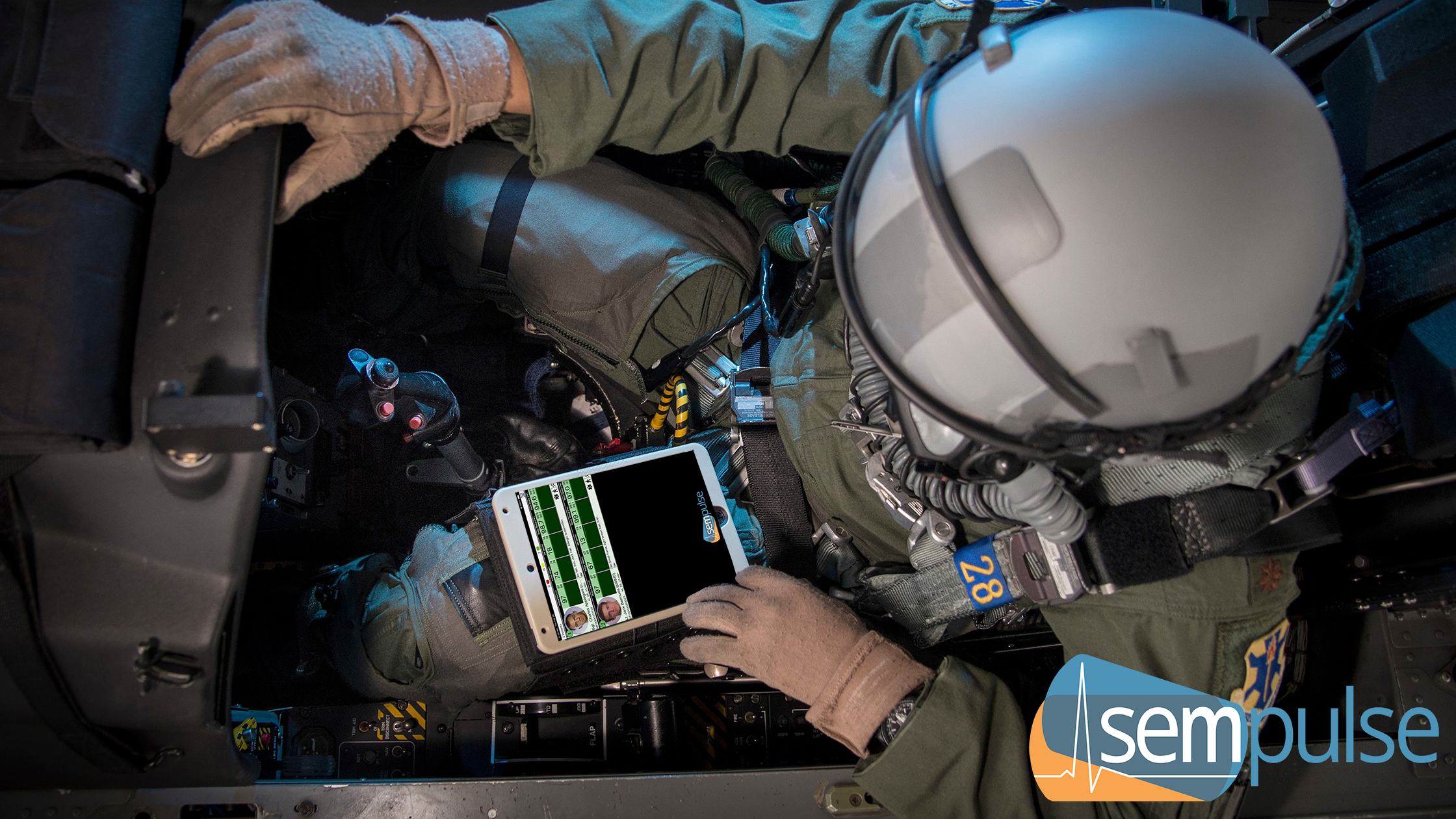
Sempulse® Showcases Halo™ Platform Vital Signs Monitoring System at Austin4America Conference During SXSW 2025
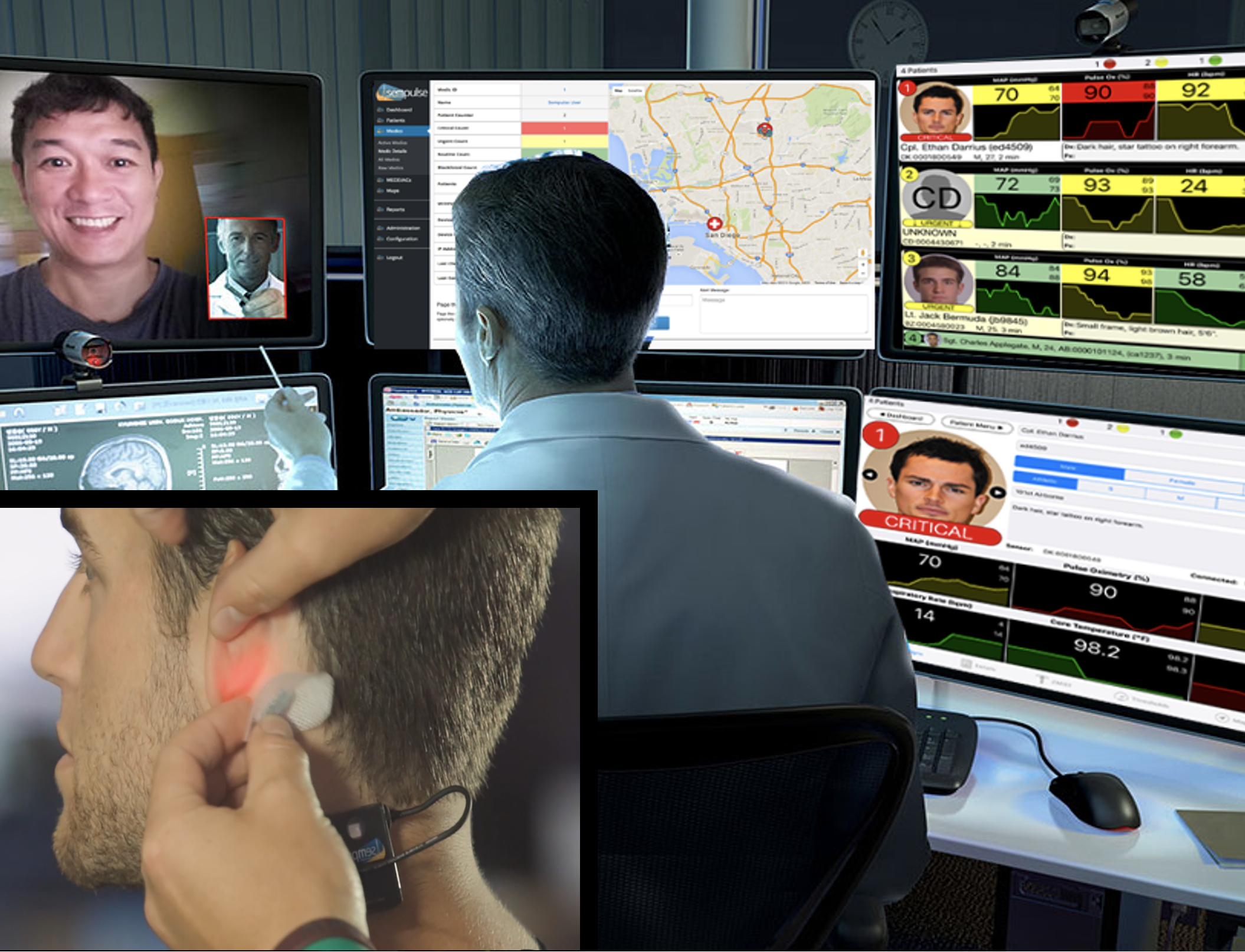
Sempulse® Halo™ Platform Selected for Project Convergence Capstone 5 (PC-C5) with the U.S. Army
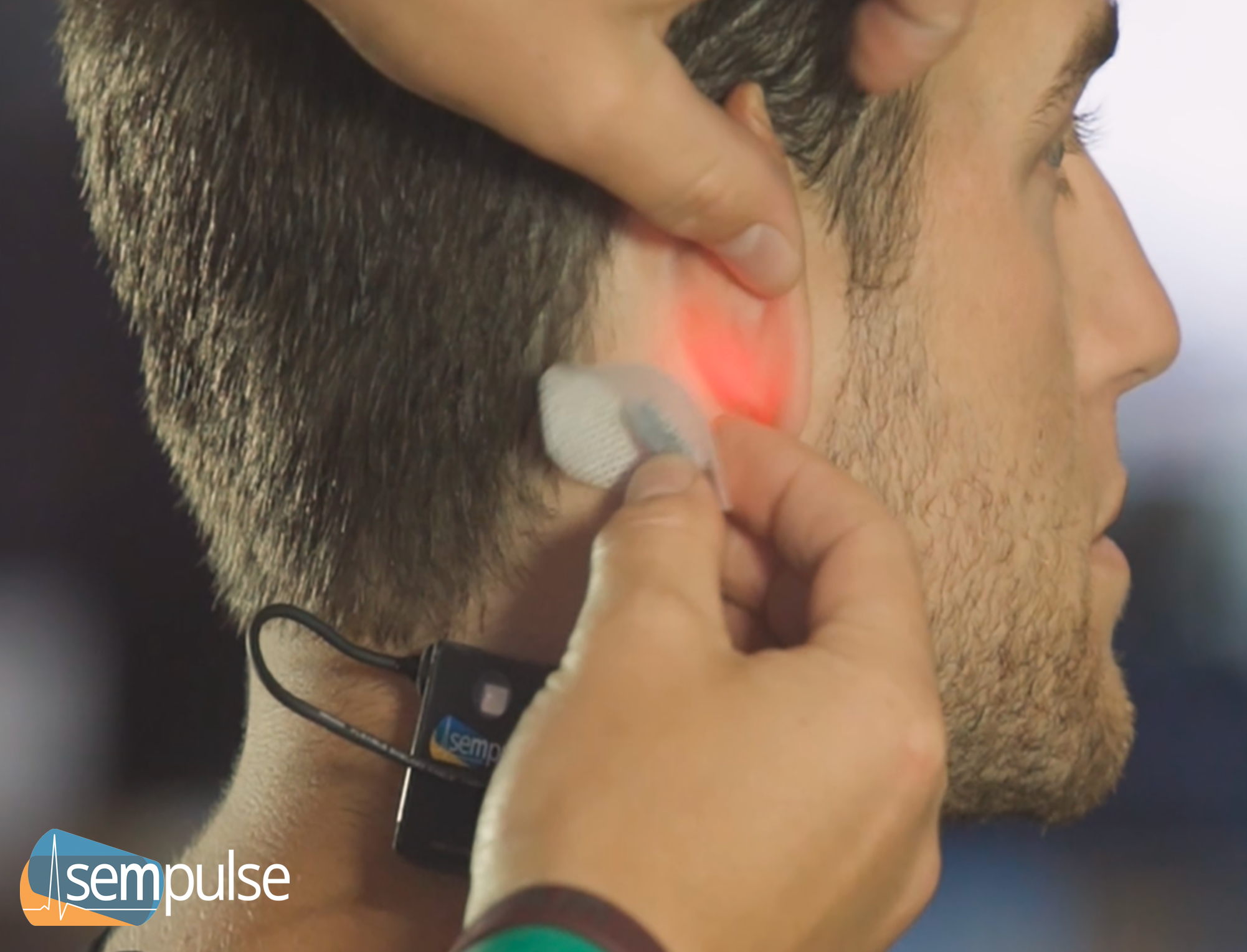
Sempulse® Positions FDA-Cleared Halo™ Platform as an Innovation Accelerator at PwC's 2025 Emerging Tech Exchange
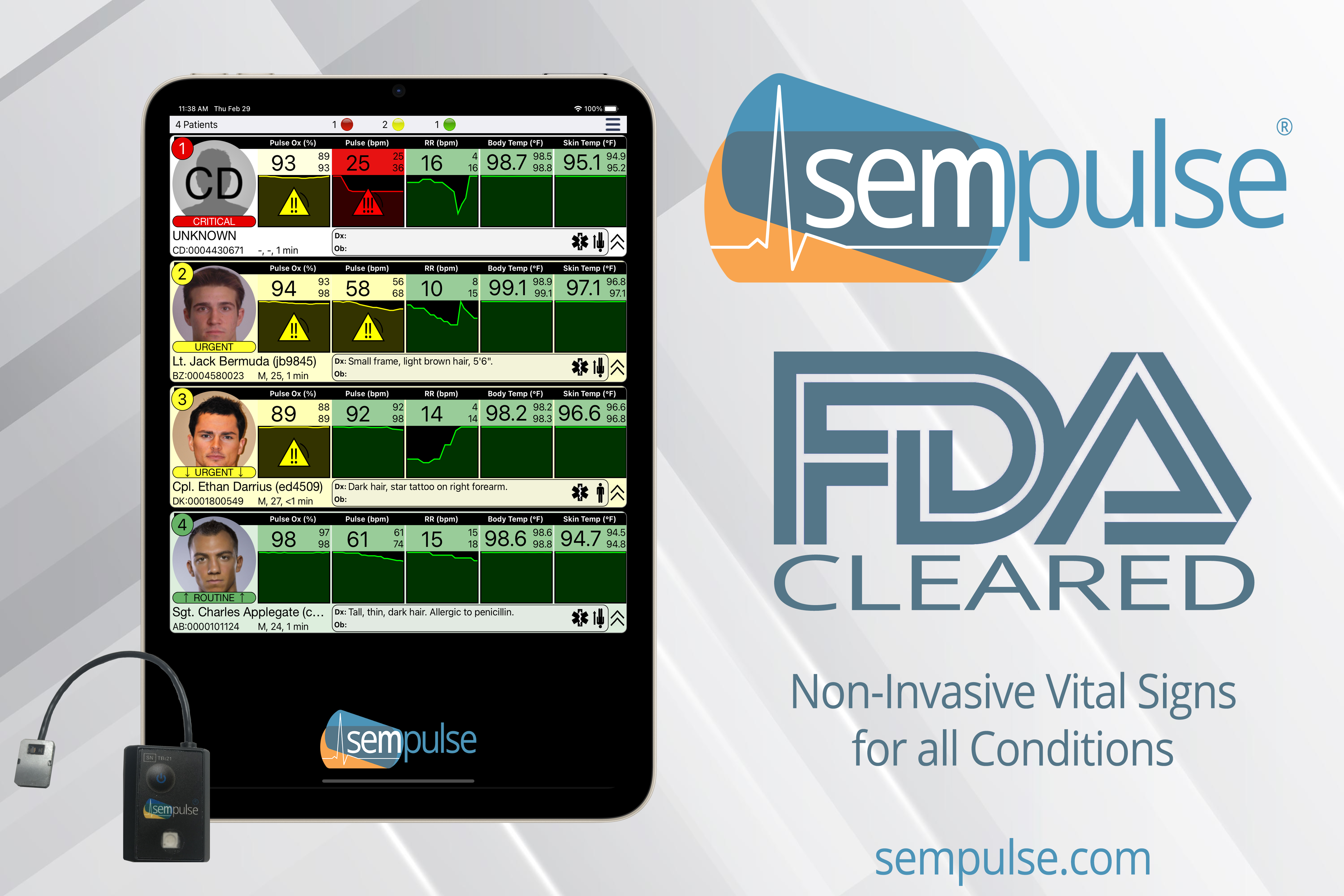
Sempulse® announces U.S. FDA 510(k) Clearance and the Commercial Launch of the Halo™ Vital Signs Monitoring System
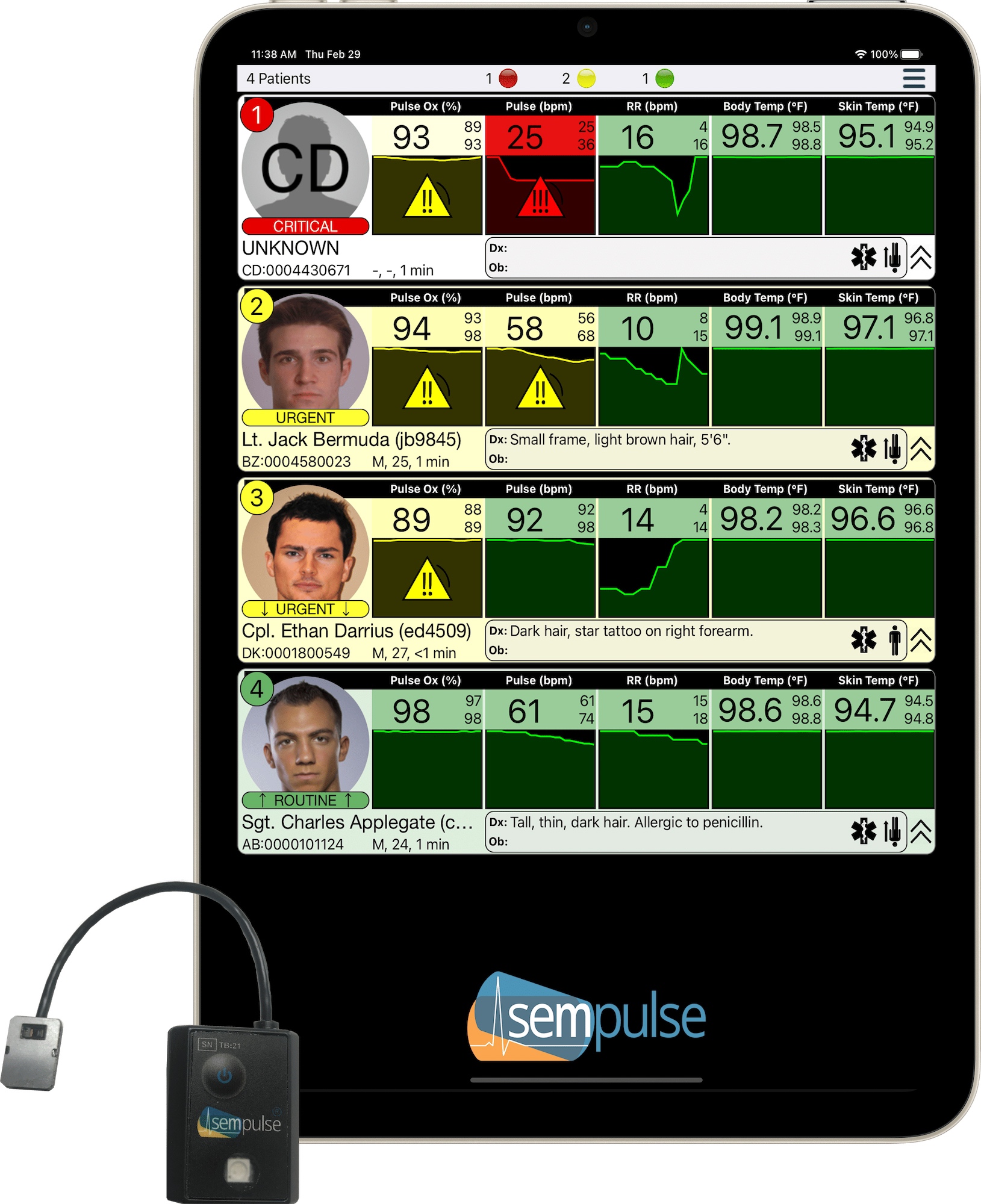
Sempulse® Halo™ Platform Saves its First Life, Marking a Milestone in Emergency Response Technology. A groundbreaking moment in healthcare technology highlights the critical role of real-time, wearable medical monitoring systems.

MTEC Announces the FDA Clearance of the Sempulse® Halo™ Vital Signs Monitoring System

Sempulse® announces U.S. FDA 510(k) Clearance and the Commercial Launch of the Halo™ Vital Signs Monitoring System
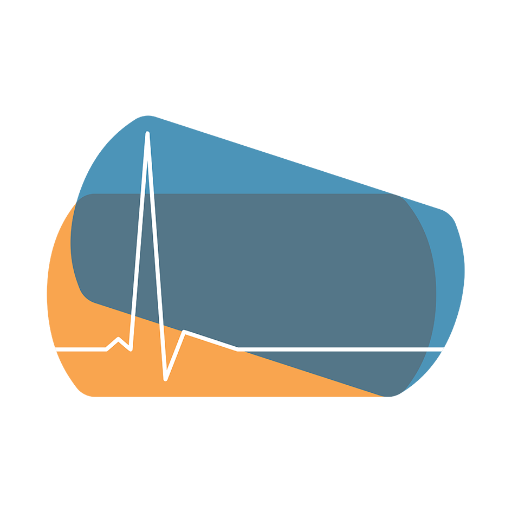
Sempulse FDA Press Release

SXSW Startups: Sempulse Saves Lives

MassChallenge Texas Announces Winners

Army announces 50 semi-finalists in 7th iteration of open-topic prize competition

$510,000 Awarded To 10 Startups At Inaugural MassChallenge Texas Finale

Sempulse's Lifesaving Triage And Telemedicine Platform Selected To Be One Of MassChallenge Texas' Finalists

Sempulse To Move Corporate Headquarters To Texas State’s STAR Park

MassChallenge Texas Announces Inaugural Class Of Startups

MassChallenge Texas Our Startups: Sempulse

MassChallenge Texas Awards $500k In Equity Free Cash Prizes To Top 8 Startups In Inaugural Cohort

MassChallenge Texas Inaugural Cohort Has Graduated

MassChallenge Texas Selects 84 Startups For Its First Program

